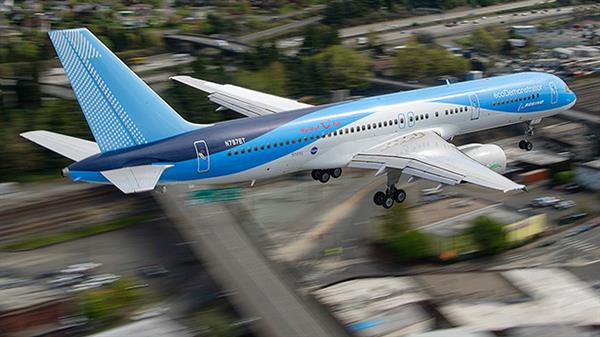Recently, Boeing has been conducting a flight test for its 757 environmental verification machine (ecoDemonstrator 757) for several months. It is understood that this environmental verification test object includes 15 environmental protection technologies, mainly to improve the environmental performance of aviation. These include the use of “green diesel†fuel, the collection of solar/thermal energy to power electric windows, reducing the amount of wiring required, and reducing the amount of fuel required.
In addition, Boeing decided to install a channel table on the 757 that uses carbon fiber 3D printed on the 787 project. The company hopes to re-use this high-value material in this way and reduce aircraft weight and factory waste.

“On this environmentally validated machine, Boeing is trying to reduce its environmental impact throughout the life of the aircraft, from improving fuel efficiency and reducing carbon emissions to recycling production materials,†said Mike Sinnett, vice president of product development at Boeing.
“In addition to using new technologies, the use of US-made green diesel in the flight of the 757 Environmental Verification Machine is another step towards reducing the use of fossil fuels.†Through a partnership with NASA, June 17. The prototype aircraft successfully flew from Boeing's airport in Seattle to NASA's Langley Research Center in West Hampton, Virginia. During the flight, the jet used 95% of petroleum jet fuel and 5% of sustainable green diesel.

While 5% does not seem to be a large number, it is a step in Boeing's green fuel plan for commercial aviation based on the revised HEFA Biofuels specification adopted in 2011. This green fuel is made from discarded animal fat, inedible corn oil and used cooking oil. It can reduce emissions by up to 80% compared to traditional fossil fuels.
“We are excited to get the experimental data from the 757 Environmental Verification Machine and are pleased to see the impact these technologies developed by NASA have on the US air transport industry.†Ed Waggoner, Director of NASA Aviation Integrated Systems.

(Editor)
Cinnabar also called zinnober. Because the ancient Chenzhou (now Yuanling) produced by called cinnabar. In fact, this does not produce Chenzhou cinnabar, but cinnabar distribution center! Its origin concentrated in Guizhou Tongren, Wan Hill. Mainly used in military industry, scientific instruments, folk also large amounts used in architectural decoration, Buddhism, funeral and other industries. Such as: paint additives, Marine coatings, inkpad, dyes, pigments, painting, calligraphy, decorations, gifts, handicrafts, cosmetics, collection, funeral, buddhist supplies, buddhist scriptures made etc.
Rock Specimens,Cinnabar Specimen,Mineral Specimen,Natural Rocks Specimen
Xinxiang Vic Science&Education Co.,Ltd. , https://www.hnmedicalsciencemodel.com